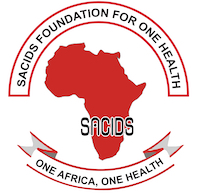The role of hospital water systems in the development of Pseudomonas aeruginosa (P. aeruginosa) surgical site infections (SSIs) in low-income countries is barely studied. This study characterized P. aeruginosa isolates from patients and water in order to establish possible epidemiological links.Between December 2014 and September 2015, rectal and wound swabs, and water samples were collected in the frame of active surveillance for SSIs in the two Tanzanian hospitals. Typing of P. aeruginosa was done by multi-locus sequence typing.Of 930 enrolled patients, 536 were followed up, of whom 78 (14.6%, 95% CI; 11.6-17.5) developed SSIs. P. aeruginosa was found in eight (14%) of 57 investigated wounds. Of the 43 water sampling points, 29 were positive for P. aeruginosa. However, epidemiological links to wound infections were not confirmed. The P. aeruginosa carriage rate on admission was 0.9% (8/930). Of the 363 patients re-screened upon discharge, four (1.1%) possibly acquired P. aeruginosa during hospitalization. Wound infections of the three of the eight P. aeruginosa SSIs were caused by a strain of the same sequence type (ST) as the one from intestinal carriage. Isolates from patients were more resistant to antibiotics than water isolates.The P. aeruginosa SSI rate was low. There was no evidence for transmission from tap water. Not all P. aeruginosa SSI were proven to be endogenous, pointing to other routes of transmission.
http://europepmc.org/article/med/28593044






